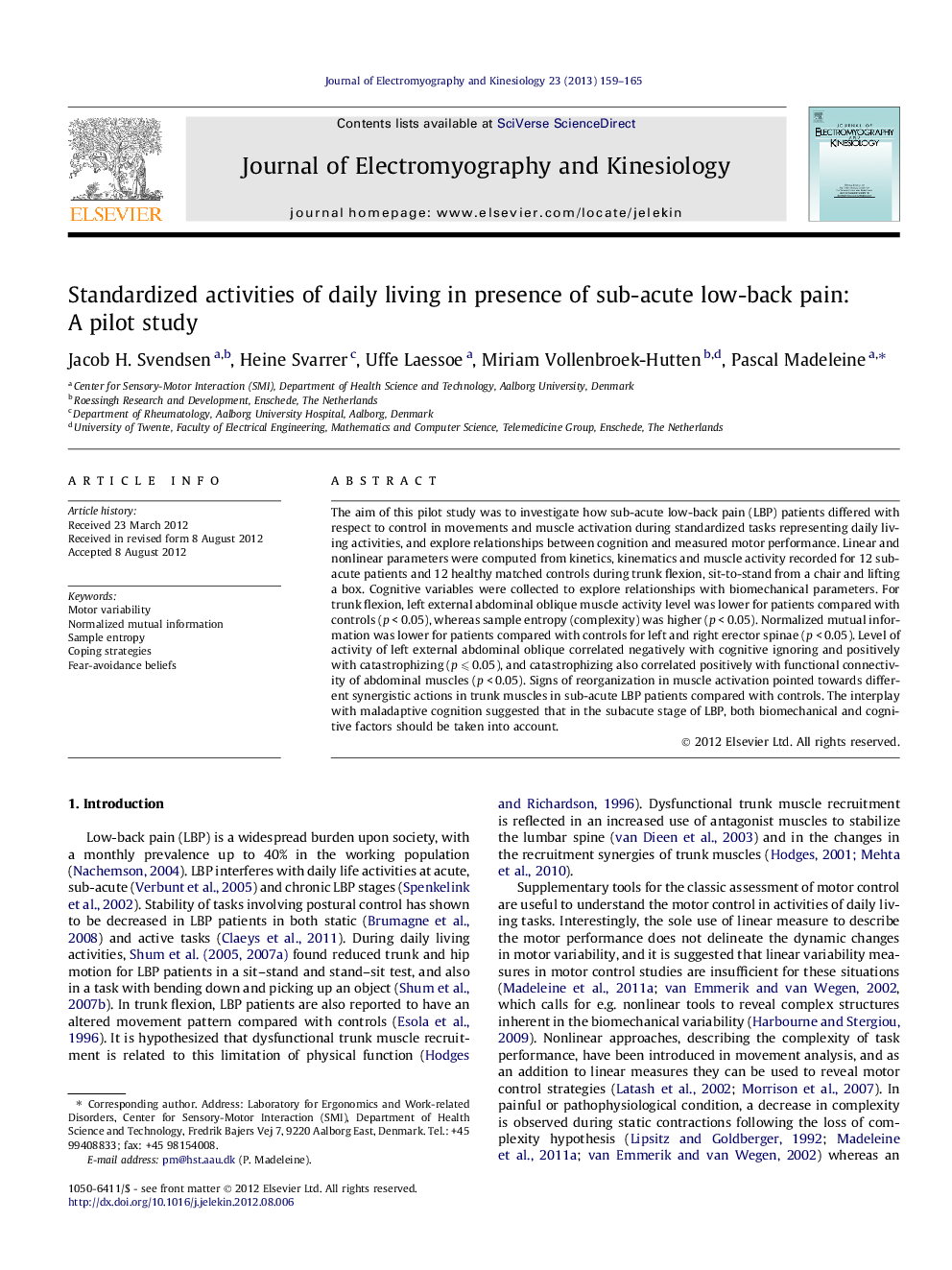| Article ID | Journal | Published Year | Pages | File Type |
|---|---|---|---|---|
| 6210444 | Journal of Electromyography and Kinesiology | 2013 | 7 Pages |
The aim of this pilot study was to investigate how sub-acute low-back pain (LBP) patients differed with respect to control in movements and muscle activation during standardized tasks representing daily living activities, and explore relationships between cognition and measured motor performance. Linear and nonlinear parameters were computed from kinetics, kinematics and muscle activity recorded for 12 sub-acute patients and 12 healthy matched controls during trunk flexion, sit-to-stand from a chair and lifting a box. Cognitive variables were collected to explore relationships with biomechanical parameters. For trunk flexion, left external abdominal oblique muscle activity level was lower for patients compared with controls (p < 0.05), whereas sample entropy (complexity) was higher (p < 0.05). Normalized mutual information was lower for patients compared with controls for left and right erector spinae (p < 0.05). Level of activity of left external abdominal oblique correlated negatively with cognitive ignoring and positively with catastrophizing (p ⩽ 0.05), and catastrophizing also correlated positively with functional connectivity of abdominal muscles (p < 0.05). Signs of reorganization in muscle activation pointed towards different synergistic actions in trunk muscles in sub-acute LBP patients compared with controls. The interplay with maladaptive cognition suggested that in the subacute stage of LBP, both biomechanical and cognitive factors should be taken into account.
